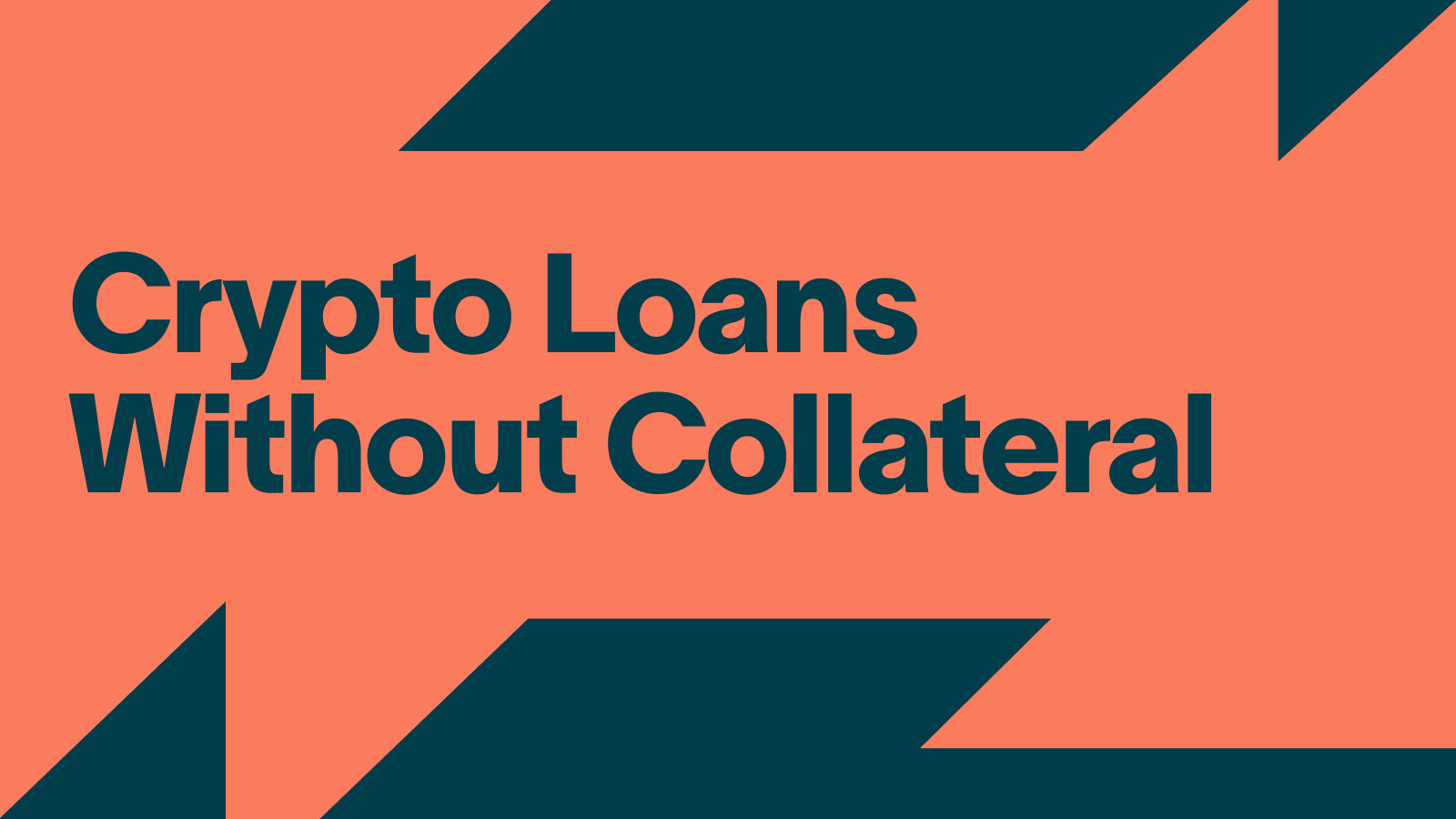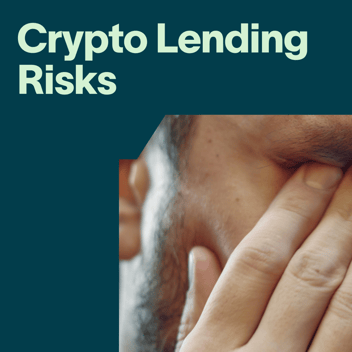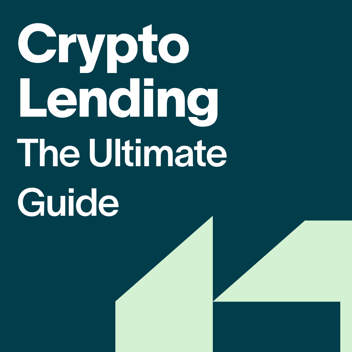Crypto Loans Without Collateral - The Complete Guide

Typically, when we think of crypto loans, we consider borrowing money against another asset. Or in other words, we think about what sort of collateral we would need in order to get one. However, some crypto loans exist which get issued without there being any collateral whatsoever. This might sound outlandish, but crypto loans without collateral are slowly becoming a major part of the crypto lending industry. Let’s take a look at how exactly they work, and whether they are right for you.
What are Crypto Loans?
A crypto loan is any type of loan that involves crypto assets. Typically, this is where people borrow against crypto collateral so that they can receive either fiat, stablecoins, or another cryptocurrency. However, it is also possible for a crypto loan to mean that somebody uses fiat as collateral so that they can receive crypto in return. When people use crypto as collateral for a loan, this is commonly referred to as a crypto-backed loan.
Related content: The Ultimate Guide to Crypto Lending
How Crypto Loans Without Collateral Work?
This is where somebody receives crypto without there being any backing to it. This means that no collateral is put up or handed over. These could be referred to as non-collateralized loans. In essence, this is where somebody has borrowed crypto with the expectation that they will return the asset, without any asset being taken by the lending provider during the process.
How do Crypto Flash Loans Work?
.png?width=1600&height=900&name=Guide%20To%20Crypto%20Lending%20(3).png)
One of the most common forms of crypto loans without collateral are flash loans. But what exactly are crypto flash loans? These are an innovation in the world of decentralized finance (DeFi), where somebody can borrow any amount of cryptocurrency and then use those borrowed funds to perform a transaction (or chain of transactions). However, there is a catch– the borrowed assets must be returned to the original location within the same block on the blockchain.
This all happens via the use of smart contracts, which are pieces of blockchain code that allow for financial actions to be automated and “signed off” by users. To understand this best, it makes sense to explain the difference between a “transaction” in the conventional sense, and a “blockchain transaction”. A transaction is simply the act of passing an asset from one person or location to another. A blockchain transaction, however, can be a collection of conventional transactions, all happening in quick succession, being added to the blockchain all at once.
Generally, a blockchain transaction will comprise of one conventional/normal transaction. However, with the innovative power of smart contracts, it is possible to perform multiple transactions together and have them added all in one block.
Related Content: Ethereum Flash Loans - The Complete Guide
To sufficiently answer the question “what are crypto flash loans?” it helps to understand a little about how this works. Somebody would initiate a smart contract where they borrow a certain amount of cryptocurrency, then they would set the contract up so that immediately after doing so they would have that asset sent somewhere else (typically a crypto exchange), use that asset to invest, and then send the funds they made in their investment back to the smart contract to return the asset (or equivalent value of what they borrowed). Clearly, this involves multiple transactions, in the conventional sense, but this would all have to happen within one block on the chain, making it one blockchain transaction.
If there is any profit made from the set of transactions, then those profits would be kept by the borrower. If, however, this process fails and there are losses, then all the transactions are canceled and the asset is returned to where it initially was. This means that, if there is a failure, the lender never loses any money. And if there is a success, then the lender gets their money back, and the borrower gets to keep their profits. In this way, the borrower can potentially reap the profits while the lender is protected against loss.
As you can probably tell, this is a technologically complex action, and its massive reliance on blockchain tech means that it can only really happen in a decentralized setting. The process provides a protective layer for all parties. People tend to use flash loans as an investment tool, aimed at trying to capitalize on very minute opportunities to make money, the likes of which usually only last for a few moments. Arbitrage trading is a perfect example of this, where people try to find discrepancies between the value of assets on different exchanges, where the value is slightly higher or lower than on another exchange. They use flash loans to seize these moments. The speed at which arbitrage opportunities arise and disappear is perfect for flash loans, as they, too, are highly time-sensitive.
It is easy to see that these are not the same as most other types of loans. They are not used in the same way as other loans, where you have more freedom to use the money as you wish due to a larger time frame. Rather, they are specialized, suitable only for a small spectrum of financial activity.
Related Content: Cefi vs Defi - Key Differences Explained
Why Crypto Loans Usually Require Collateral
Typical crypto loans work nothing like flash loans. Along with being less time-sensitive, they also require collateral. The main reason for this is that lenders need to have a way of ensuring that borrowers return the value of the assets they have taken. Flash loans circumvent this issue by using smart contracts as a way of reaping the value back, as well as limiting what a person can do with those borrowed assets.
Typical crypto loans do not have this type of fallback. Instead, funds are held by the lender as collateral for the borrower’s loan, and if the borrower wants to get those funds back, they need to pay for them. This includes the original loaned assets, plus an accompanying interest in-kind. Collateral also functions as a way of keeping interest rates low– this is because the collateral offers a form of security for the lender. If the borrower defaults on the loan, the lender can sell the collateral to recover their funds. Because the lender has this safety net, they can afford to offer lower interest rates. The risk associated with the loan is substantially reduced, so the cost of the loan (the interest rate) can also be lowered.
When it comes to crypto loans, the most common forms of collateral are Bitcoin, Ethereum, and stablecoins like USDT and USDC. Of course, other forms of collateral also exist, and some platforms will offer a range of altcoins. Some peer-to-peer crypto lenders might even use NFTs as collateral.
Related content: How P2P Lending Works in Crypto
Why Crypto Loans Sometimes Require Over-Collateralization
An over-collateralized loan is one where the lender requires more collateral than the value of the loan they issue. This is a very common practice in the world of crypto. This happens because crypto lending providers typically have no means of performing background or credit history checks on their clients, or putting any measures in place to judge the likelihood that a borrower will not default.
Decentralized platforms lack the infrastructure to do this, as they are largely automated networks where borrowers remain anonymous, or at least pseudonymous. This allows loans to be instant, as there is practically zero approval process, but it also means that over-collateralizing is a necessary element in ensuring lenders are not harmed by borrowers who cannot repay.
But make no mistake, this is not just a decentralized experience– most centralized lenders, including Ledn, over-collateralize for largely the same reason. Vetting potential borrowers is not common practice in the crypto loan landscape. It is time-consuming, costly, and above all, invasive. Avoiding checks like this is in line with the spirit of crypto, which has always been about providing financial tools and options for those who might not typically get the opportunity to access them. This includes those who are unbanked or underbanked, meaning that the traditional financial world has either abandoned them or has made interacting with them very tough.
Traditional lenders have a history of being discriminatory when it comes to the way they approve loans, as well as being deeply invasive through credit and background checks. Plus, metrics like this do not always represent a true account of a person’s trustworthiness. Crypto lenders avoid this moral issue by cutting this step out entirely, using over-collateralization as an alternative. There is also a financial benefit to this, which is that higher collateral can lead to lower interest rates, as mentioned earlier, due to the collateral working as a strong enough safety net for interest to be less significant in the entire process.
The Risks of Under-collateralized Loans
It is possible, nonetheless, to occasionally find under-collateralized crypto loans. This is where the borrower receives a greater value than the collateral they offer. This can, on the surface, sound like a good deal in the sense that you get more than you give over, but they come with some significant drawbacks.
For starters, these will often have extremely high-interest rates to offset the potential losses that could come with a borrower defaulting. Lenders who offer under-collateralized loans might also perform credit and background checks, which are discomforting and often disliked by borrowers. Naturally, this will include a longer wait time for approval, as there are more hoops to jump through.
There is also a good chance that if a lender is offering under-collateralized loans that there may be hidden red flags that the company is facing. In such a volatile industry, it is best to proceed with caution when you see a deal that looks just a little too good to be true. Trustworthiness, transparency, and sensible offers are what you should be looking out for the most. It might sound boring, but you do not want to be involved with a company that is on the brink of collapse.
Even with flash loans, there is a risk involved. While the code behind a smart contract might look sound and robust, there have been times in the past where they have failed to perform their duty, leading lenders and borrowers alike to face financial problems. While they have been around for several years now, flash contracts are still relatively experimental, and the heavy reliance on automation and code can make them a target for hackers.
Related content: The Risks of Crypto Lending
What You Need To Know Before You Use A No-Collateral Crypto Loan Service
If you are looking for a lending provider who offers no-collateral, or under-collateralized, crypto loans then there are a few factors to consider.
Lender reputation: Reputability and legacy are two of the biggest features in the crypto world. The longer somewhere has been active, the greater the chances are that they are legitimate. This is because many projects start up during bull markets and then struggle to survive to bear markets, causing them to close down. If you can find somewhere that has weathered many crypto storms, then there is a higher chance of them being reputable.
Regulatory Compliance: Nothing shows an exemplary reputation quite like documented regulatory compliance. If a company is willing to demonstrate that they are trustworthy to a regulatory body, and have passed scrutiny, then this is a huge positive. You might not see this with DeFi projects as there are looming questions over whose legal jurisdiction it would be to vet them, but for centralized companies, this is a must-have.
Scam Potential: research the lending provider and see if anybody has reported any scams or possible underhanded tactics being noticed. This is the case for both DeFi and centralized (CeFi) projects. Scams take many forms in the crypto landscape, and they are often evolving and emerging along with new technologies, so you need to be extra vigilant about this.
High-Interest Rates: Many no-collateral and under-collateralized lenders will include massive interest rates as a way of protecting their lenders. Carefully calculate these rates, and think hard about your own financial situation and your possible cash flow in weeks/months to come. The exception to this is with flash loans, where interest rates are less relevant.
Smart Contract Auditing: After learning “what are crypto flash loans”, and finding a provider that might suit your needs, you should then keep an eye out for any smart contract audits that have occurred. This is where a project gets an external evaluator to test and examine their smart contracts to make sure they are robust, secure, and doing their intended job. A reputable flash loan provider will wear their audits like a badge of honor, making it easy for you to read the audit report yourself. In a similar vein, you should then research the auditor who performed the check, to see that they are reputable as well.
Where Can You Get A Crypto Loan With No Collateral?
There are a range of crypto lenders avoiding collateral on the market. Let’s highlight three of them here. However, it is worth noting that these are not endorsed by us, and have not been checked extensively by us. Use them at your own peril. Nothing beats doing your own research, so if something listed interests you, it makes sense to rigorously check them out yourself.
Aave: This is a DeFi veteran in the crypto lending world, and is often the first place people go to when trying to find out what are crypto flash loans. The project has a good reputation in this industry, and is liked by many. It runs on the Ethereum network. Learn more about Aave in our top lending platform guide.
Equalizer Finance: This is a DeFi project that specializes exclusively in flash loans. It is cross-chain, working with various Ethereum-compatible blockchains such as Binance Smart Chain, Polygon, and Optimism.
Uniswap: Much like Aave, Uniswap is a well-established DeFi project, although its focus is more on exchanges. That being said, it does have dedicated flash loan services available. However, the project refers to them as Flash Swaps, not loans.
The Best Alternative To A No Collateral Loan
If you are looking for an alternative to a crypto loan without collateral, then one of the best options on the market is Ledn’s B2x loans. This is a tool that lets you borrow Bitcoin, whilst also buying more Bitcoin alongside your loan. They are easy to access with instant execution, and because Ledn matches the amount you offer as collateral, that means you get x2 the amount of your holdings when the loan is closed and repaid.
They also have a span of 12 months, rather than just a few seconds or minutes, like flash loans do. In essence, they provide more freedom, whilst also helping you increase your Bitcoin position and add more to your wallet.
Conclusion
Crypto loans without collateral are an interesting area within the lending world. Unlike their collateralized counterparts, there is much more to learn about how they work, as well as more pitfalls to avoid. They can no-doubt be a fantastic financial instrument for niche use cases (such as arbitrage), but they also have a lot of drawbacks. When it comes to flash loans, despite how potentially powerful they can be, they are still in the experimental stage of their lifecycle, making them prone to risks.
For those who are open to collateralized loans, Ledn serves as a well-established and longstanding company with a great reputation in the crypto lending sphere. With a strong track record, sensible interest rates, and innovative tools such as its B2x loans, it offers a robust and reliable service to crypto users.
Sponsored by 21 Technologies Inc. and its affiliates (“Ledn”). All reviews and opinions expressed are based on my personal views.





